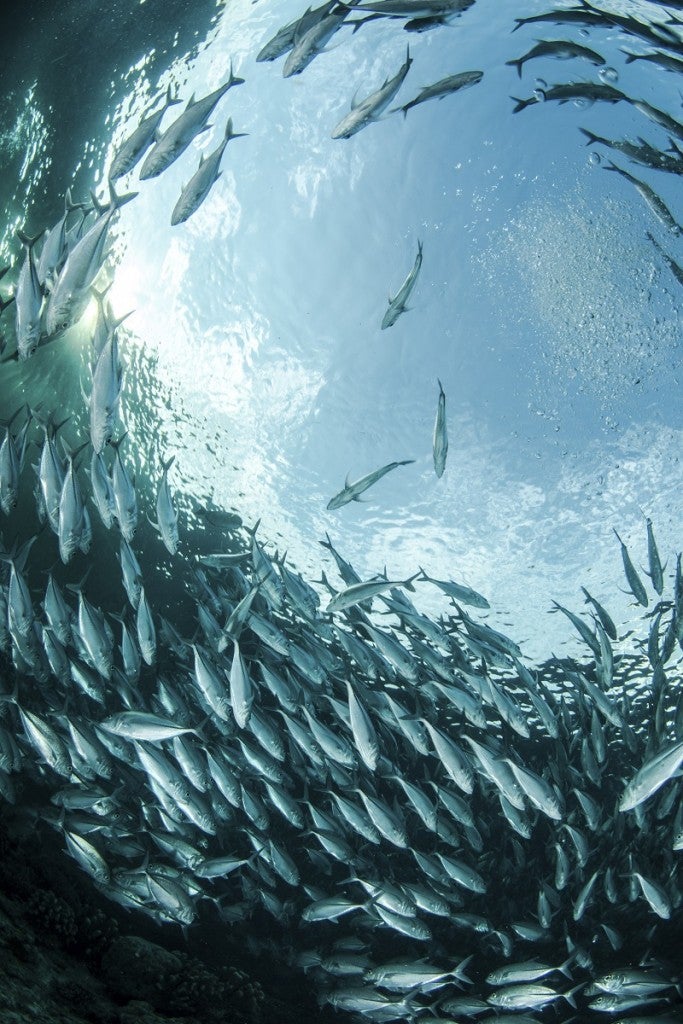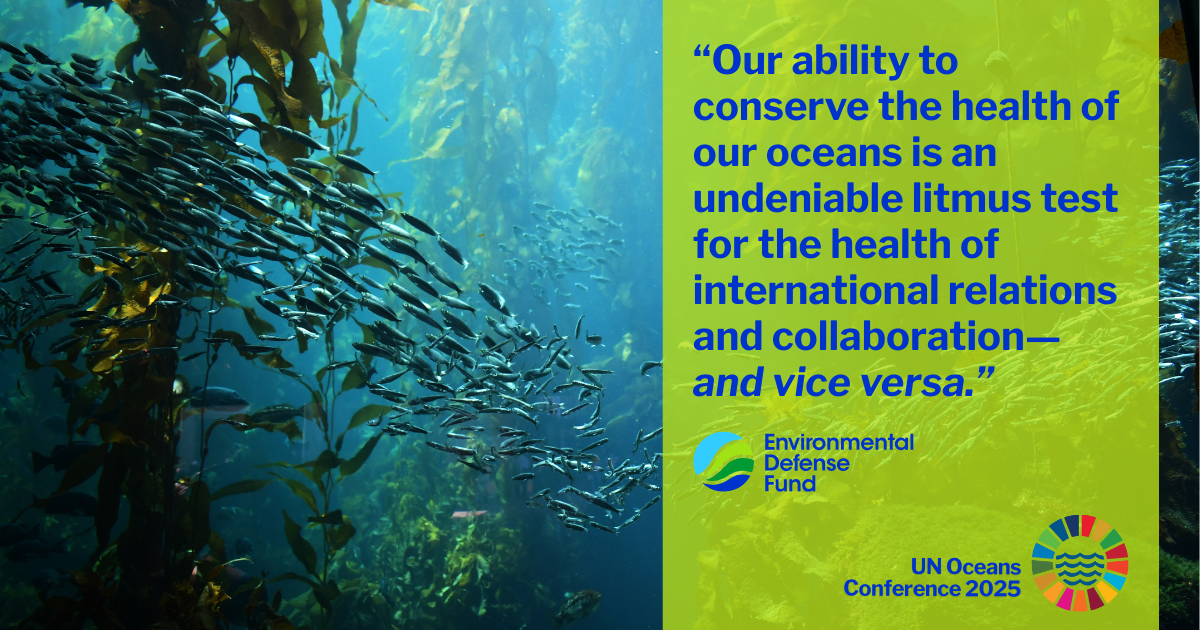New study underscores urgency to rebuild global fisheries
By: Rod Fujita & Doug Rader
 People have been catching fish for thousands of years, so you’d think by now we would have a pretty good idea of how fisheries are doing. However, the two most basic numbers that you need to answer that question – how many fish are in the sea, and how many are being caught – have been highly uncertain.
People have been catching fish for thousands of years, so you’d think by now we would have a pretty good idea of how fisheries are doing. However, the two most basic numbers that you need to answer that question – how many fish are in the sea, and how many are being caught – have been highly uncertain.
A new study published in Nature by researchers at the University of British Columbia finds that the number of fish in the sea has been underestimated, and that the world’s fisheries should be more closely monitored. We couldn’t agree more.
It’s critically important for scientists to estimate these numbers so we can tell whether catch is too high, too low, or just right. The stakes are enormous: these numbers and trends will determine what management actions are necessary to ensure that fisheries can continue to provide healthy food for billions of people and provide livelihoods for tens of millions.
Many scientists have tried to estimate the first number – how many fish are in the sea. Typically, rich streams of data are used to feed a complex model which is used to estimate it. However, the vast majority of fisheries do not collect much data, so other methods are necessary to estimate fish abundance. Scientists at the University of California at Santa Barbara and the University of Washington came up with one such method using catch statistics from the UN Food and Agriculture Organization (FAO) and information on the life history (e.g., growth rate, life span, etc) of each of the target species. Using this method, they were able to estimate the abundance (biomass) of fish species targeted by 1,793 fisheries that had not been scientifically assessed before (see their paper here).
Their conclusion: nearly 2/3 of these fisheries are too depleted to produce their maximum yields over time, meaning that the world is losing out on large amounts of yield and the jobs, profits, and economic development that come with that yield. In fact, if fishery management systems were put into place that stopped the decline in biomass and rebuilt fisheries to levels consistent with the production of maximum sustained yield, it’s possible that global catch could increase by 40% and biomass levels would go up by 56%.
Scientists are making progress estimating the number of fish in the local ocean, too – even when there are no catch records. This is important, since many fisheries do not report catch to the FAO. Many of the methods they’ve developed depend on other kinds of data that are commonly collected even when catch is not recorded such as underwater visual surveys of coral reefs or the distribution of lengths of fish in the catch. All of this commonly collected information can tell us a lot about the status of fish populations. We describe a process for using these kinds of methods to generate scientific guidance for fisheries management when data are scarce here).
This new study addresses the second question: What is the global catch?
Scientists at the University of British Columbia undertook a monumental analysis of all of the information they could find on fish catches in each fishing country. Current estimates of fish catch from the UN’s Food and Agriculture Organization depend on spotty catch reporting accumulated by fishing nations. These official – but limited – statistics painted a picture of global marine fisheries catch peaking in 1996 at about 86 million metric tons, then falling to about 80 million tons and stabilizing there.
By supplementing the FAO statistics with deep dives into each country’s fisheries, the UBC team was able to “reconstruct” each country’s catch from 1950 to 2010. Their new study paints a radically different picture, one that shows global fisheries catch peaking at 130 million tons in 1996 – about 50% higher than the FAO estimate – then declining rapidly after that to about 110 million tons. Perhaps more important is the decline in the availability of fish to individuals, which according to the UBC study peaked and stabilized from 1970 to 1988 – as increases in fish harvest kept up with the population boom – but has fallen consistently since, threatening the food security of the world’s poor.
Declines in catch can result either from depleting fish populations, which can produce less and less catch as fish become less abundant, or from the imposition of catch quotas to rebuild fish populations or maintain production of yields over time. The UBC study suggests that the imposition of quotas — while they can be very effective for individual fisheries, if incentives for complying with them are also in place–appear to have only a small impact on catches at the global scale. When the main regions that use catch quotas are removed from the analysis, the overall catch trend is unchanged, suggesting that the main cause for declines in catch is stock depletion.
The UBC study also sheds light on three other big unknowns in the world of fisheries: how much are recreational, artisanal, and subsistence fisheries catching?
Official statistics on these types of fisheries are very few and far between, because countries focus on their larger-scale industrial fisheries. While industrial fisheries do appear to be responsible for most (73%) of the global catch (109 million tons in 2010), artisanal fisheries –often extremely important for food security and livelihoods, especially in the developing tropics – caught about 22 million tons, or about 20% of global catch, in 2010. Subsistence fishermen caught about 3.6 million tons in 2010 (3% of global catch). Discards accounted for 9.6 million tons (9%) while recreational fishing added about 1 million tons (1%).
The UBC team is careful to point out that their estimates are highly uncertain and the ranges for the estimates are quite large. However, this paper represents a major advance in our understanding of how the world’s fisheries are doing – and it is not a pretty picture. But there is a silver lining – if global catches are indeed much higher than FAO thought, then the economic, social, and ecological benefits of reversing fisheries declines are also much greater than projected by all the studies that have been using FAO statistics.
Fortunately, we know how to do this. Secure fishing rights have been shown to reverse declining catch trends in fisheries, while actually increasing profits for fishermen, improving safety at sea, and improving the quality of fishing jobs. What’s needed now is to expand the fishing rights tool box to fit all of these different kinds of fisheries, make sure that they are equitable, build working examples, and spread them around the world.
This process is underway in countries like Belize and the Philippines. Belize just committed to create a national fishing rights system designed by Belizeans to suit their fisheries, dominated by small sailing vessels and skiffs. The Philippines, worked with four communities to design their own fishing rights systems customized to coral reef ecosystems and local culture. EDF has a plan to scale these kinds of locally-grown solutions up to the global scale, by focusing on 12 particularly important countries that together account for most of the global catch and have an outsized influence on the fisheries of many other countries.












